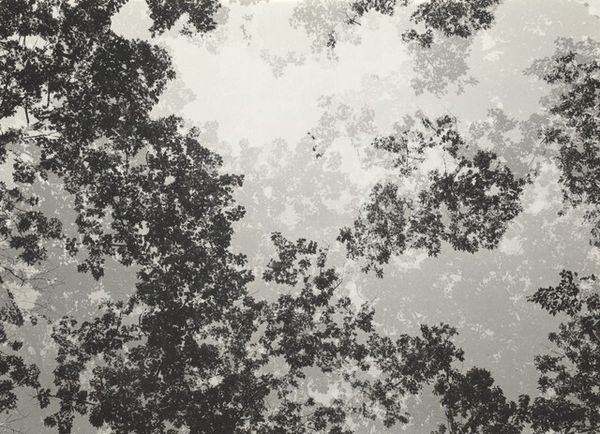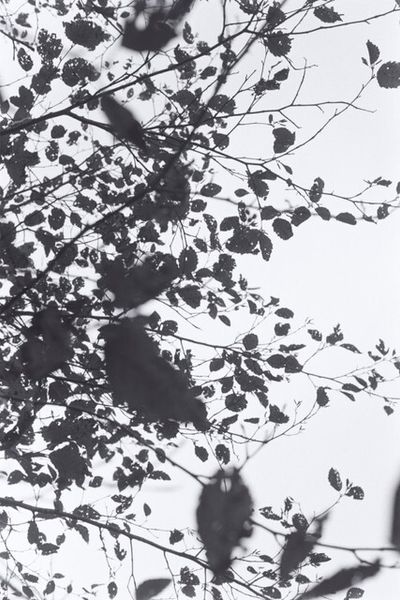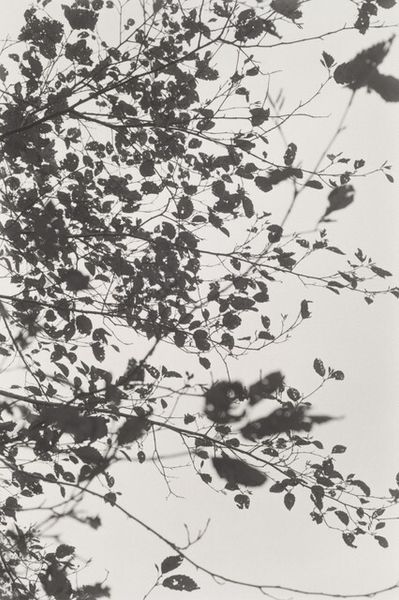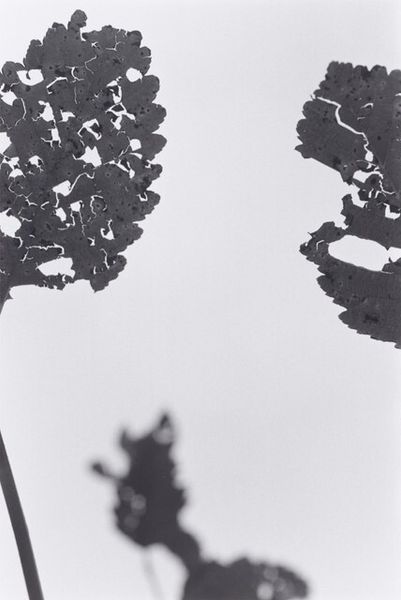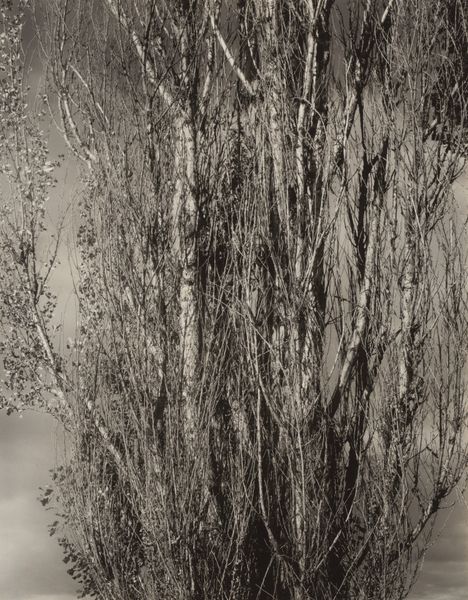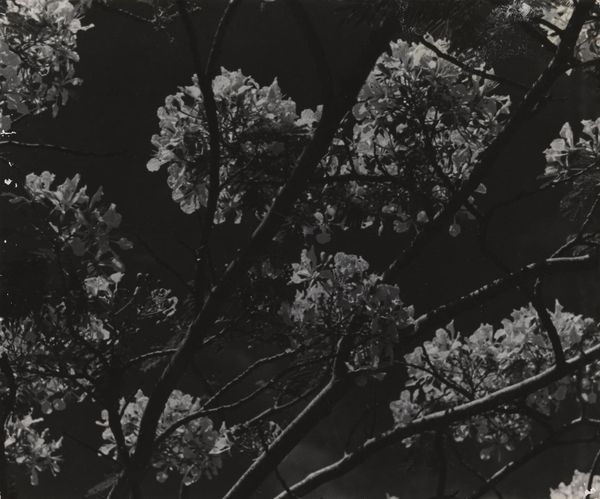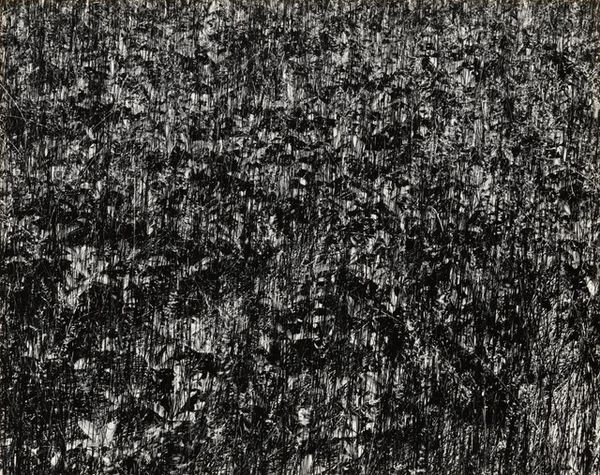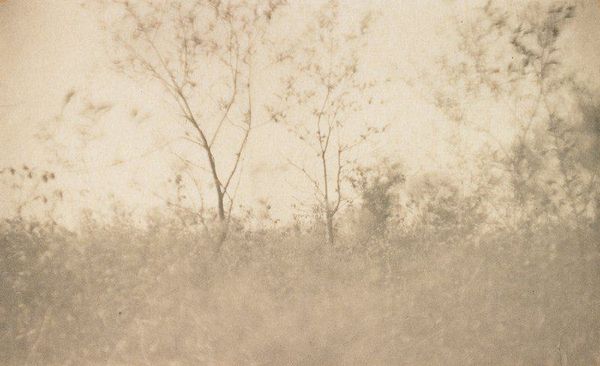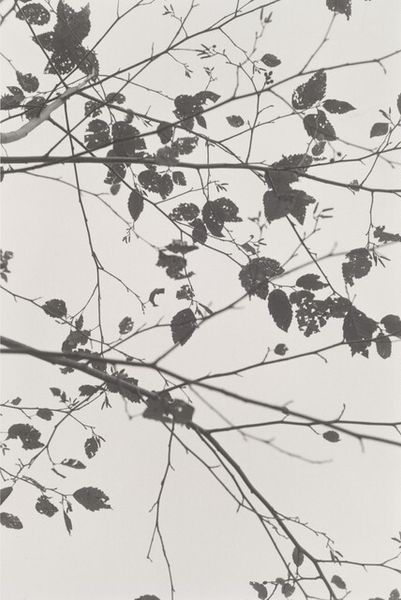
Dimensions: overall (sheet, trimmed to image): 8.4 x 11.3 cm (3 5/16 x 4 7/16 in.) mount: 9.21 x 12.07 cm (3 5/8 x 4 3/4 in.) mat: 27.94 x 35.56 cm (11 x 14 in.)
Copyright: National Gallery of Art: CC0 1.0
Harry Callahan created this small, untitled photograph in Detroit using a multiple exposure technique. The result is a layered, almost dreamlike image, primarily in shades of gray and black. The density of the leaves creates a textured surface, contrasted against the lighter sky, evoking both depth and flatness. Callahan’s method disrupts traditional photographic representation, as the trees seem to exist in several places at once. This echoes structuralist ideas that question fixed meanings, suggesting reality is composed of multiple, overlapping structures. Semiotically, the trees act as signs, their repetition destabilizing their conventional association with nature's simplicity. Callahan uses the camera to explore the multifaceted nature of perception. The technique functions both aesthetically and conceptually, challenging the viewer to reconsider the relationship between image and reality. The photograph stands as a testament to the capacity of art to reflect and shape our understanding.
Comments
No comments
Be the first to comment and join the conversation on the ultimate creative platform.
